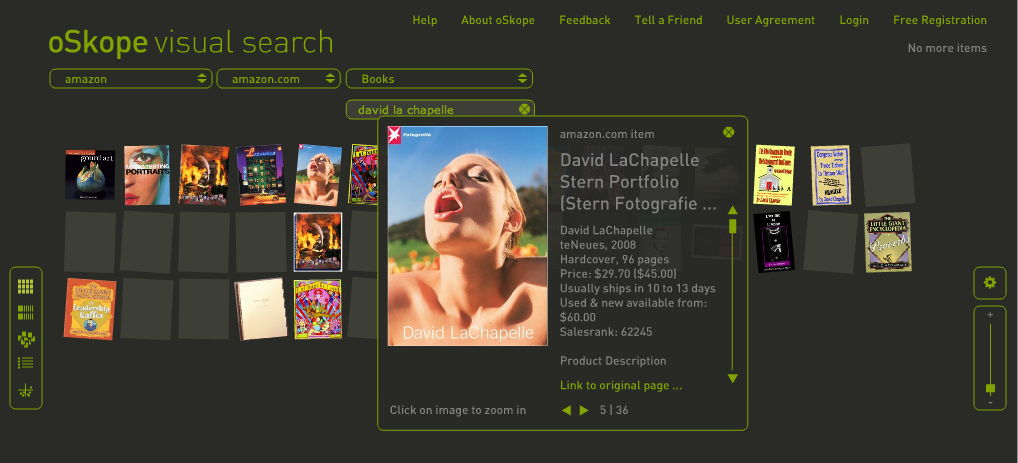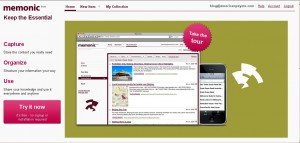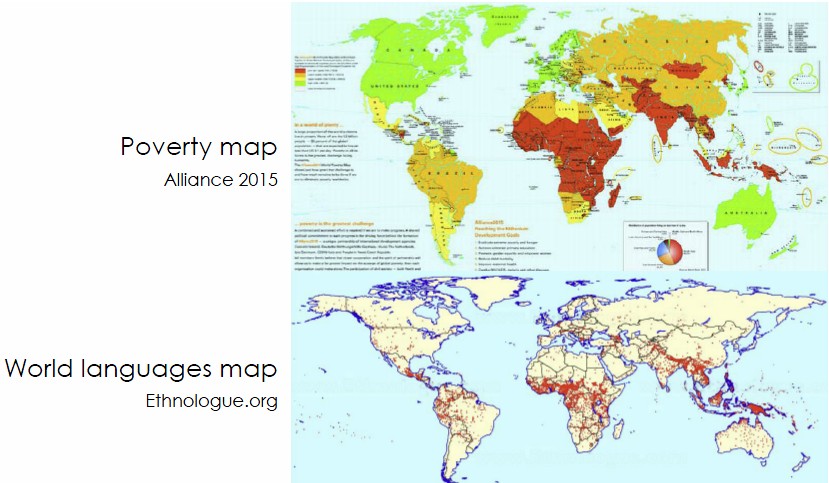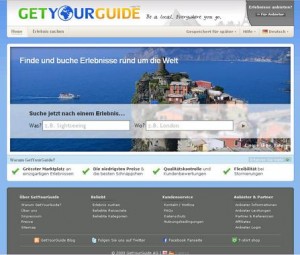The following are my chaotic notes from the Web Monday Zurich 2012 #3 at the SRF, the Swiss Radio and TV company. The topic was online media, how things are converging, and what to expect for the future. The presenters were SRF, Joiz, and Paper.li. The following notes are recountings from my head, not necessarily exactly what happened or what was said, it’s a bit Gonzo, and if that disturbs you then the Back Button is at your disposal. Continue reading Web Monday Zurich 2012 #3
Category Archives: Web Monday Zurich
Web Monday Zurich 2012 #4
This Monday was Web Monday which means I had the chance to see the lounge of the Swisscom building for this 4th 2012 event of Zurich startups and ideas coming together. These are my notes from the event, taken largely in the Gonzo style and sent off to press with minimal editing. Inaccuracies, misspelled thoughts and rampant exaggerations are to be expected. Read at your own risk…
There were just two fantastic topics on hand at this fine Web Monday Zurich: the Blue Lion incubator and Online conversion / optimization for startups, our fantastic host was Swisscom, the main telecommunications company in Switzerland. Continue reading Web Monday Zurich 2012 #4
Web Mobile Monday #2 Zurich 2012
I headed to Web Monday Zurich 2012 #2, which also happened to be Mobile Monday, it was a shared event at the HP building in Dubendorf, and the topic was Native vs. Hybrid vs. Web apps. As I’m now involved with developing Lost In Reality, a mobile storytelling app, I’m very into this topic of choosing native vs. web/hybrid, so this gathering came at the perfect time for me. The following is a recap from my iPad notes, I’m intermixing what the speakers said with what I thought in my head, so hold on as this recollection could get hairy. There were three excellent speakers:
- Markus Leutwyler, HP: General overview on Web vs. Mobile vs. Native Apps
- Colin Frei, Liip: A case study on web / hybrid apps
- Vikram Kriplaney, local.ch: A case study on native apps
 Markus Leutwyler from HP (@twtomcat)
Markus Leutwyler from HP (@twtomcat)
History:
Now everyone is an expert and can make a web page, mobile started two three years ago, now the app is on the rise, we go to apps, not webpages. So now where are we today? Can everyone make a web app now? The web has a low entry barrier and it’s everywhere, browsers are everywhere, and now it is also an application platform. So what are native, hybrid, and web apps?
Native:
iOS, Android, Blackberry, Windows Mobile, you use a variety of languages based on the app market you want to target. Why native? Go native for performance, offline mode, find ability, device integration, monitization, user experience. You can make money with app stores. But what exactly is the native advantage? For example, now with WebGL we can do 3D in HTML.
Web App/Hybrid:
Html5, JavaScript, canvas, OpenGL, web sockets, css3, phone gap, ability to code one and export to different places (like with build.phonegap.com) Code reuse, common technologies, low entry barrier, cross-platform, familiar tools and techniques. While this doesn’t work for all applications just look at the trends, JavaScript performance is improving, hardware acceleration is coming, rapid browser evolution (short release cycles for Firefox), new tools frameworks coming out all the time.
Web vs Web Apps
Basically a web app is installed and able add to home screen. Then you have ChromOS, boot2gecko, where it simulates the native experience.
 Collin from Liip (@colinfrei)
Collin from Liip (@colinfrei)
Why do an app instead of a web page? To access device functionality, camera, etc. discover ability via app store, reach different audiences than via a Google search, selling your app, ability for in-app subscriptions, easy for people to tap and spend money. Barriers? NIWEA is an answer, wrap your content in an app container, hence you can use Cocoon, Phonegap, etc.
- Phonegap: it is a container, gives access to device functionality via API using JavaScript. What are the advantages?
- Knowledge: many web developers know JavaScript, lower barrier to entry, portability, can reuse the code for different devices.
- Portability: Means you can view the sites on your browser, if you write the code well you can port the stuff anywhere and reuse it. All these things affect costs, so hybrid allows you to use advantages of native.
Phonegap is good with APIs that are wide ranging, and then use plugins to offer specific functionality, but it isn’t universal. In the end you still have to write some unique code for different devices and their unique app needs. Concerning app performance, native is always better by definition, and it depends on your use case, like games that are device intensive for hardware optimization, but you can try game closure and cocoon.js, it all depends on what your goal is.
TV App for Tages-Anzeiger:
The purpose of the app is that they just show you the good TV shows, based on their recommendations. You can stream output to your tv and devices, it’s free to try and then is subscription based. It’s an iPad app, but lots of it was Html5 and JavaScript. Video is done via Html5, Phonegap was used to wrap it for the app store. In-app plugin purchases was used for monitization. Did not do much with portability to other devices because everyone is using the iPad anyways. Development done in the browser and tested, then ported to iPad. In total, everything was good with using phonegap.
The Future
Hybrid is expected to be the future. Using the same code base is such an advantage in development. The hybrid aspect becomes much smaller, browsers will be able to implement device features, like camera tag in html5, that is now possible. Check mozilla API , see what sensors you will be able to access.
 Vikram Kriplaney local.ch mobile architect
Vikram Kriplaney local.ch mobile architect
(@krips)
At local.ch they look at the breakdown of numbers for devices, iOS, android, etc. Why native? Well when they started developing for mobile it was 2008, they had expertise in iPhone, they had a mobile website, it was logical to first get a launcher from the phone and then just use the mobile optimized webpage.
In the end, user experience is biggest reason to go native. The user has expectations for that device, and they should respect that experience designed for that device. Performance is a big reason as well. Trust that the device maker has done all the optimization needed to give good UX via tight integration with hardware. Integration with other apps also good – more fine grain control. Now there are more frameworks than platforms for development, some are cross platform, some more on web side.
Leaky abstractions: any nontrivial abstraction will leak, you want to forget the details, but you end up for developing for each platform anyways. So why not go fully native from the start? Naturally for this you need a team with a wide range of competence, which local.ch has. The more audience they have on any platform, the more effort they put into developing for that platform as the platform evolves, launcher the web, hybrid, native. They do do hybrid, do it when it makes sense.
End Questions/Comments
- Is local storage a problem? In principle, offline functionality is not a problem.
- For testing, you can do automated builds and do UI testing with test flight.
- Backbone, spine as single page applications, for more responsive website.
- Yes mobile is going to take over.
Web Monday Zurich #21
 It was a fine summer Zurich night, and I was heading back to the Web Monday Zurich gathering to check out what was happening at our wonderful host, Interxion. There were many events worth noting during this Monday, but the main points include Interxion, 42 Matters, Restorm, and above and beyond customer support by a Googler.
It was a fine summer Zurich night, and I was heading back to the Web Monday Zurich gathering to check out what was happening at our wonderful host, Interxion. There were many events worth noting during this Monday, but the main points include Interxion, 42 Matters, Restorm, and above and beyond customer support by a Googler.
Interxion
Eddy van den Broeck presented Interxtion, a data center in Glattbrugg in Zurich, and the host of this 21st Web Monday Zurich. I had a little trouble finding the Interxion building, but it’s probably a little hard to find because it’s better that way for the security of their business. Interxion is a data center. A large data center. In fact, a very large data center in the center of Europe. I never really appreciated the data center business until this presentation. Interxion sells secure reliable data space. A simple idea executed with high precision and reliability. The scope of their operation is huge, and these types of centers will be the backbone of our digital future (actually they’re already pretty integral to everything). Politicians keep harping on cyber security and the next big war, but I’m guessing that in the future if you really want to fight a war with someone you won’t care about their military bases or missile silos, you’ll just target their data centers with tunneling cluster bombs in an effort to cut the beast off at its head (this part about wars and beasts and decapitation with cluster bombs is my own fantasy – not part of the Interxion presentation).
Interxtion is located in the very near vicinity of the Zurich airport. I didn’t realize this was relevant information, but I’m sometimes slow comprehending the world around me. Why near the airport and why in Switzerland? Power, fiber optics, customers, political stability, connectivity. All things a giant information storage space needs to be successful. As we do more and more on the net we tend to forget that big data needs to be somewhere…physical. Even the cloud has be a cloud somewhere, it’s not just a fanciful collection of Smurfs shuffling your data between magic mushroom fields and your iPad or Asus Transformer – and there are many real-world factors that need to be in place. For example, Interxion uses more power than the Zurich airport and yet are CO2 neutral. The mechanical engineer in me found this absolutely fascinating. I actually chose my latest internet service provider iMountain largely because they run their operation on solar power, and I like to support Green. Interxtion offers this choice to their customers as well, allowing and promoting the use of alternative energy sources for customers, for example, wind power sources for energy consumption instead of nuclear. Why Switzerland? Best power grid in Europe, politically stable, in the center of everything – makes sense to me (I can list these same reasons for choosing to live and work in der Schwiez myself).
In closing Eddy spoke about the drive to create a Silicon Valley inspired innovation culture in the Zurich area – code named: The Zurich IT Valley. This is a theme people are often talking about, but implementation is always a question. Swiss startup folks visit places like San Francisco and them come back with tales of how awesome it is over there and how things need to change in the Zurich area. However, Silicon Valley wasn’t built by purpose (at least there was no city planning blue-print, even Apple doesn’t have a central campus yet), it was an organic evolution of the innovation society, probably dating all the way back to the atomic bomb. There are real grass-roots movements in the Zurich area like Web Monday, Mobile Monday, Web Tuesday and The Hub, where the locals meet and organically develop communities that define a healthy environment for startups and innovation culture. The Zurich IT Valley sounds like a more structured approach, let’s see what the next five years will bring.
42 Matters
The first startup presentation was by Andrea about AppAware.org – the first app offering from a new startup out of ETH Zurich called 42 Matters. The name of the company is self-explanatory if you’ve read the till the end of the Hitchhiker’s Guide to the Galaxy, and it not then it doesn’t matter. I mean, the relevance of the name, not the worth of the company. AppAware is an application which shows you what people are installing on Android devices. You can see the installation trends, see what’s hot, what’s not, and based on that info decide for yourself what apps to install on your own device. AppAware is location aware, so you can see what the people around Zurich have installed (and uninstalled). Naturally you can connect to friends to see what they’re doing and copy their behavior if you happen to be a sheep grazing in the mobile app feeding fields. You can tag apps and…do what most social network type apps are doing – and in this field, idea execution is everything. As I began to consider an ASUS Transformer I understand why this sort of app is needed. By contrast you can easily see in the Apple app store if a an app is good or not, read reviews and see if there’s compatibility issues with the latest release. I couldn’t really find the same info planning which apps to buy for an Android device, and AppAware would fill that need.
Is there a way that AppAware is making money? Not at the moment, but there are high hopes for the future, such as providing apps for money and data mining. AppAware/42 Matters is an ETH startup, it originally began as part of a PhD project, and was successful enough to found a company. Seems like a reasonable direction, but in the SWOT sense of the mobile landscape it seems like AppAware could be a stepping stone to something better for the founders – as opposed to the final killer product. The thing is, apps like AppAware have no security against competitors, and even if you’re the first to market it doesn’t necessarily mean anything. A new hot trending app can come along with the same\similar technology and suck up your users like a sponge wiping across the universe or a second straw in your milkshake. Still, part of the reason the founders put their ETH studies on hold was because their idea got so big so quickly, and that pulse could continue to grow with the explosion of mobile devices on the world. I wish them well.
Restorm.com
I’m a Doktor of Science, but I’m also into photography, painting, and small production video creation. So Restorm.com was naturally very interesting for me to learn about. There is a very large market for licensed music and media on the internet, but a lot of it is simply shared or pirated. I know this well, and there are many times I want to use a piece of music in a video production, but as an independent hobby-director I have no way to license music legally to use in my work. I’ve resorted to creating my own music, and now I’m collaborating with a DJ from Atlanta I met on Talenthouse.com. Working with DJCue is a great solution for me, and this anecdote is actually a success story for Talenthouse, but the vast majority of folks don’t have time to forge partnerships like I’ve had the ability to do, and just want to easily license music for their projects as easily as buying the song on iTunes. Restorm is a company trying to do that (well, compared to the way it is now it would be as easy as iTunes).
Philippe (from Restorm) wants to make it easy to allow direct licensing agreements between musicians and producers needing music for films and other projects. This is huge for people like me, who have been wondering since the beginning of time (ok, maybe 3 years at least) why we can’t do this already. From the presentation, it seems like Restorm is taking the right angle on the licensing issue. The photography stock market has basically been destroyed by microstock companies such as ShutterStock, who built unsustainable business models ideal for designers needing cheap images but pretty poor for photographers (think ShutterStock) looking to profit from their imagery. Companies like Photoshelter and Alamy provide credible licensing options for photographers, but I think that Restorm can do something really significant in the area of creative works licensing if they’re successful starting with licensing music. I’m looking forward to their full launch.
The After Party
After the presentations the best part of any given Web Monday begins, the time of drinks by the BBQ and networking with all manner of interesting people. I was mingling and hanging out with folks like Mike Byte to catch up on his latest projects and by the end of the night witnessed a customer feedback session that forever proves in my mind that Google is not evil, and is composed of caring people focused on providing an enjoyable experience for their customers.
It went down like this, I was talking in a circle of friendly conversation with some folks (including a Googler), admiring business cards (I had forgotten mine) and making smart remarks about this and that newest thing. I vaguely recall something about tactile surfaces perhaps, or a smart phone display built wth thin-film piezo technology, which will power the devices by user gestures. Then a tall man in a light colored suit, and pressed shirt walked up to us. He seemed out of place at a Web Monday, where even the folks from IBM don’t come in suits. He was a well-dressed man with well-groomed hair and a suit and a tie in a sea of web hipsters with tactile business cards, Freitag bags, disheveled hair cuts, and relaxed-fit jeans (I was sporting a fine pair of white leather Adidas by the way).
One of our circle of conversation was a Googler, wearing his fine Google t-shirt. The well-dressed man didn’t seem to be very happy, and we soon found out it had to do with Google. The conversation started off innocently, our Googler was showing off his phone sporting Android, and we were engaged in dialogue about how some people put a piece of paper over the camera port on their iMac because they’re a little freaked out at the new technology (as did I at first). The iPhone location tracking scandal was in the news at that time, and then our well-dressed friend began making remarks about Google being evil and how he deleted his account. We asked about his line of work and turns out he was a risk manager. So he was keenly clued in to all manner of freaky things that could go wrong in life, backed up by mathematical models, and I think he was a little paranoid – Paranoid that Google was evil and hell bent on taking over all our lives, but then the real reason for his quiet rage came out.
You see, he had set up a Google AdWords account, and he was pissed off that AdWords wasn’t showing up on his chosen search terms, even when his colleagues tried to search from different browsers. He seemed like a meticulous person, and as it turns out, had double checked and tried everything. The main page of his company was on the front page of Google (thanks to organic search optimization), but apparently for AdWords the search terms didn’t hit. There’s no customer service line for AdWords, and he was uber frustrated at the whole experience. Our Googler friend began a solution-oriented approach, bringing up different things that could be wrong, desperately trying to help our well-dressed friend with now fiery eyes, slightly reminiscent of lava about to explode from a deep crack in the surface of the Earth. This went on for maybe 10 minutes…did you try..ah…YES I TRIED THAT..what about..YES I DID THAT AS WELL.
It’s hard to describe the crescendo of rage that was now emanated from the eyes of our well-dressed friend, and for a second I thought we were heading to an apex in energy and he was going to rip off his blazer and punch our Googler in the face because of his poor AdWords user-experience. I’ve been studying user experience this past year, and also have shared this personal rage at wanting to throw a computer out the window, but when you have a representative of the company at the root of your rage directly in front of you, well, the bull’s eye is obvious for your rage canon. This is the point in a confrontation when you either fight back or accommodate to and empathize with the feelings of the aggressor and diffuse the bomb as it were. Our brave Googler handled the situation as any upstanding professional should. He pulled out his Google business card and offered to personally help in the matter.
This defused the situation because some one was listening – and listening is at the heart of user experience satisfaction. It’s the difference between OSX and Windows Vista. It’s the center that this social media tech world revolves around. A real person was offering to help and get to the root of the issue and was sincere in showing that he cares. In an instant the fiery eyes cooled and the rage diffused into the cool Zurich night sky. Our well-dressed friend remarked to me (now with a slight smile on his face), that if Google didn’t change its ways that everyone would simply leave and go to some other search giant. I remarked, that unlike the US economy, Google is too big to fail. He laughed now with genuine joy and agreed with me – a huge smile upon his face, and faded into the fine Zurich night like the Cheshire Cat blending into the background of Wonderland.
Web Monday Zurich #14
 One of the coolest things about the Web Monday Zurich meetings are the cool locations. Every Monday it takes place in a different place, and after a while you get the feeling of exploring the unique office spaces of the Zurich tech scene. One month you’re sitting in the cozy office space of Amazee, the next you’re chilling on the comfortable couch of Wuala, I took a ride down the rabbit hole slide at Google and on May 3rd, 2010, I got to check out Big Blue, the IBM European headquarters in Bahnhof Altstetten in Zurich. IBM is famous for being (historically) the Evil juggernaut of Silicon Valley (my feeling via Steve Jobs), the beast which Apple and Microsoft rallied against in the early days of the personal computer wars. But now that Apple is the old skool corporate entity – well…IBM sort of feels like the nimble innovation-minded corporation reborn from the ashes of the Silicon computer wars. The people there seem energetic and free-minded – like tech-prophets marching into the future with their heads high and without the corporate giant stigma you see when watching the Pirates of Silicon Valley.
One of the coolest things about the Web Monday Zurich meetings are the cool locations. Every Monday it takes place in a different place, and after a while you get the feeling of exploring the unique office spaces of the Zurich tech scene. One month you’re sitting in the cozy office space of Amazee, the next you’re chilling on the comfortable couch of Wuala, I took a ride down the rabbit hole slide at Google and on May 3rd, 2010, I got to check out Big Blue, the IBM European headquarters in Bahnhof Altstetten in Zurich. IBM is famous for being (historically) the Evil juggernaut of Silicon Valley (my feeling via Steve Jobs), the beast which Apple and Microsoft rallied against in the early days of the personal computer wars. But now that Apple is the old skool corporate entity – well…IBM sort of feels like the nimble innovation-minded corporation reborn from the ashes of the Silicon computer wars. The people there seem energetic and free-minded – like tech-prophets marching into the future with their heads high and without the corporate giant stigma you see when watching the Pirates of Silicon Valley.
The IBM building has a fantastic atrium, where you can mingle and enjoy an apero before heading into the auditorium. There’s a giant sort of aquarium with blue lights and a couple of huge serves on display, it’s an interesting place to have a beer, and IBM beer surpasses the offerings at Google. I enjoyed a weissbeer while getting my head slightly twisted for my presentation on Web Portraits Zurich and mingled with folks. But before I got up on stage and tried to make a fool of myself, we were treated to talks and thoughts from IBM, Dein Deal, and Kooaba.
IBM
Siddhartha Arora (from IBM) was our host for evening, and presented the IBM Global Entrepreneur Program. Basically, IBM is interested in working with startup teams to build a smarter planet. This is an awesome higher purpose to hear from giant company like IBM. So what do startups need when starting out? They need to be low cost, they need mentoring and networking, and then they need marketing and sales. And if you’re accepted into the program, IBM offers it’s project support, people, and marketing strength. Teams would have access to IBM servers and technology support to allow the growth of new ideas and startups. What’s in it for Big Blue? The intellectual property stays with the startup, but I think there’s the belief that helping technology grow is a good thing. If you have a sweet idea that works well on a small startup scale, at some point you’ll need to scale toward the sky, and you need IBM for that. So, basically IBM is enabling new ideas for a smarter planet by supporting startups, and hopes to benefit from the eventual resources required for cool startup ideas to turn into killer companies. I think that this approach is what big companies like Big Blue should be doing to foster and encourage the spread and evolution of ideas, and the higher purpose here, “To build a smarter planet” sounds authentic and is highly inspirational. If you’re interested, you can apply for the program at www.ibm.com/isv/startup.
Dein Deal
There are a number of cool social marketing ways to form new selling opportunities, and Dein Deal is basically taking the idea of grouponworkes.com and putting it in practice in Switzerland. The concept is as old as supply and demand, if you pool the buying power of people, you can reduce the price of a product. Dein Deal focuses on providing deals on “experiences” in Switzerland. What’s an experience? Going out to dinner, a massage, wellness, whatever can be offered. It’s good for deal providers because they get a lot of people using their services, and encourages people to come back after trying it out. It’s good for Dein Deal, because the concept has already been proven successful in a ton of other countries. It’s a copycat concept, but who cares? If something works in one place (like America or Germany) why not see if will downscale to a small country like Switzerland?
Kooaba
I’ll be honest, I love the idea of Kooaba, because as a photographer and visual imagery junky, it’s the technology I was always excited about. And since I live in a cave, I also didn’t know the technology already existed and felt like an idiot in a crowd of brainiacs. What does Kooaba do? Image recognition. That’s it. That’s what I love to learn about. The Kooaba technology recognizes objects in images. If you can identify these elements and then link it to something (like Amazon) you have a very powerful tool for image searching and monitization of online imagery. Why is this important? Because you can’t search for images on the internet. You can only search for tags and text associated to imagery, but you can’t draw a house and find images of houses on Google (not that I know of at least). The idea is that you have an iPhone, Android, smart phone, take a picture of something, and then you get buying info on that object (online stores, Amazon, etc.). Google has a similar application called Google Goggles, which is now the main competitor of Kooaba. The old competitor used to be a startup called Snaptell, who was bought by Goolge (see how the circle of life works).
Kooaba isn’t able to recognize everything though. If you have a picture of a cat, it won’t know what to do with it. Basically the technology works by querying a database, recognizing an object in the image, and then sending the user to buying services. They also have some applications like Paperboy, which is used to take a picture of a magazine article, and then you get connected to the electronic version online on your smart phone. They also have Shooting Star, a photo management app with flickr integration, and using the image recognition technology your image is instantly tagged based on recognized objects. Very cool I think. At the moment it looks good for tagging according to landmarks and scenery, which is great for travel photography. However, this is really just a very small part of what image recognition has the potential to do for retail business and advertising.
Why is imagery recognition so important? Because we love celebrities because of who they are in our minds and love to buy the shit they pose with in magazines. So companies pay advertising agencies to develop ad campaigns with famous faces to sell stuff like Nespresso and clothes. But with image recognition all you would need to do is have a picture on an Android/iPad/iPhone/internet tablet, and in an online magazine and click on an object that Lady Gaga is wearing in some random article about music and then using location based information technology your device could be connected with the closest store offering ghastly latex shoes or you instantly get One-Click link to an Amazon store. Of course, this sucks for the advertising photography industry because it means that any image can be used as an ad, not just those that have been licensed to ad agencies. Imagine my Urban Ninja photos on Flickr being used to sell Katana Samurai swords in Austin, Texas when some kid is looking for cool martial arts photos on his lunch break at school? My images would have aided in selling a product, but I get no split from the sale. But that’s the future, and it’s already here.
Web Portraits Zurich
The last presentation of the night was me and I went low-tech as I presented the Web Portraits Zurich project that I started on Amazee. I went over the concept, explaining why I started taking photos, and how I got bored with self-portraits and started taking to women on the internet to setup model shoots, and then came to the web portrait project idea. I stared the portrait project because I’m continually inspired by the thoughts and visual style of the people I meet in the startup scene. Then it was the most natural thing in the world to start a portrait project, the higher purpose being, “to create cool imagery of people in the startup scene around Zurich and Switzerland.”
I presented images from Mathias Möller and Lukas Fischer, and then talked a bit about the brain storming process and online tools we’ve been using to develop portrait ideas like Google Wave and Cacoo. The next portrait will be with Dania and Gregory from Amazee, and if all goes well a giant Tech-Flesh jungle portrait of the Amazee team will find it’s way onto the net.
Zurich is an exciting place to be if you’re into the startup scene. For more info on what’s happening check out the Web Monday Zurich group on Amazee.com or UX Chuchi or Marketing Chuchi, or just walk the tech streets and explore the possibilities.
Web Monday Zurich #13
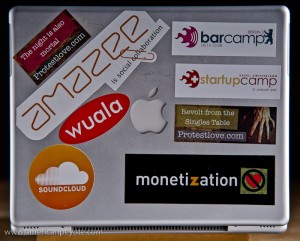 Web Monday Zurich #13 was held at the offices of Wuala in Zurich (I took a sticker for my laptop), and covered such lovely topics as why companies fear Facebook, the history of the music industry and the visual searching tool I always wanted but never knew existed. I had a headache during the presentations, but that didn’t deter from the coolness of the tech evening from settling into my neuron flow. To join future Web Monday meetings check out the Web Monday Zurich project on Amazee.
Web Monday Zurich #13 was held at the offices of Wuala in Zurich (I took a sticker for my laptop), and covered such lovely topics as why companies fear Facebook, the history of the music industry and the visual searching tool I always wanted but never knew existed. I had a headache during the presentations, but that didn’t deter from the coolness of the tech evening from settling into my neuron flow. To join future Web Monday meetings check out the Web Monday Zurich project on Amazee.
I can’t say where the pain in my head came from exactly, some combination of being sick last week, finishing a review of a new electroactive polymer paper, ski touring towards the Wildstrubel (before recovering) in a snow storm and building up an image of a beautiful woman next to a nuclear mushroom cloud is bound to put pressure on essential areas of my neural networks. Plus I think I need new glasses.
 According to the book “Neuro Web Design: What Makes them Click?” (which I read for the last UX Book club Switzerland ), people love stories, and if you start one everyone will be captivated. This explains why iMusicianDigital AG was my favorite presentation of the night, because it was mainly a story, that of the music industry from the 1990’s till today.
According to the book “Neuro Web Design: What Makes them Click?” (which I read for the last UX Book club Switzerland ), people love stories, and if you start one everyone will be captivated. This explains why iMusicianDigital AG was my favorite presentation of the night, because it was mainly a story, that of the music industry from the 1990’s till today.
The 90’s were the golden age of the music industry. People went crazy buying over-priced CDs and more money was made in this time than at any other time in the history of the industry. Then, around 2001 broadband hit along with cheap CD burners and P2P networks, and all the consumers who were pissed off at paying $20 for an album on CD with two good songs and a lot of crap on it were all too happy to pirate as much music as possible (this last part is my own take on the history). CD sales dropped and there was a 20% sales decline per year. Discount CD sales were pushed by big retailers like Media Markt and Best Buy (in the US) who lost money on CDs but made a killing on other stuff (first get them in the stores). While this all went down the local retailers and cool CD shops where put out of business…and now where are we?
Now it’s estimated that 60% of the music we consume is pirated in some way or another. Why? There is a theory, purported in books like “Free” and “Economies of Abundance” that the value of things like images, music, movies, and other media will always tend to zero in the long run (like your survival rate). So how does one make money on something with a declining perception of monetary value like a music album?
Well, first off, in the traditional model of the music industry there was no real-time accounting and the administration of selling music was very inefficient. In the new model, such as with iMusicianDigital the content is user generated whenever possible. An artist creates an account, uploads the album as uncompressed audio and that music is distributed to iTunes, Amazon, etc. The musician sees real-time stats for where the music is bought, what countries, how much, when, and is paid in a timely manner.
How successful an artist is financially is dependent on much more than the distribution system. The savvy musician needs to build a fan base, often through live shows (connect the poetry to the reader) and now through social networking tools like Facebook, MySpace, etc. It’s like anything else, you need some way to connect to the fan base and develop a community.
iMusicianDigital is attempting to fill that niche, that area of the music industry which is in flux. Artists upload their album and a little while later it’s available on iTunes, Amazon, etc. It’s interesting for me to learn about this stuff, because I want to the a similar thing with self-published books. Seeing how music is distributed and promoted online is similar to the publishing-on-demand business models for books, putting the promotion and marketing of the material in the hands of the creator.
 Raphael Briner from HyperWeek gave the first presentation of the night about developing online social networking communities (think Facebook) for businesses. Why do businesses need his company? Because it’s too hard to build the platforms up from scratch. A few examples were shown including stackoverflow.com and it’s cool to hear about the development of this stuff. However, since I’m a consumer and am now overloaded with Facebook, Twitter, Tumblr, my blog and Flickr, I stood around wondering when I’m going to actually start shooting pictures again (yes, my mind wanders, the result of too many social networking sites).
Raphael Briner from HyperWeek gave the first presentation of the night about developing online social networking communities (think Facebook) for businesses. Why do businesses need his company? Because it’s too hard to build the platforms up from scratch. A few examples were shown including stackoverflow.com and it’s cool to hear about the development of this stuff. However, since I’m a consumer and am now overloaded with Facebook, Twitter, Tumblr, my blog and Flickr, I stood around wondering when I’m going to actually start shooting pictures again (yes, my mind wanders, the result of too many social networking sites).
![]() The last presentation was for Oskope, the visual search and find design I’ve always new was possible, and continually frustrated when it didn’t exist. The concept of Oskope was originally presented two years ago, but this was the first I’d seen of it (I’m often oblivious to the world, I admit it). The idea of Oskope is to present products as images, allowing you to search visually and have the image products grouped in a certain way that you can better find what you were looking for. Ever tried searching for “Shoes” on Amazon? I’ve even tried using eBags to find a cool leather bag, and ended up going to Scaramanga in the UK. To be fair, Scaramanga sells some of the coolest vintage bags I could imagine (perhaps I’m just shallow) but the point is that sites like Amazon are really a cluster-fuck to search through unless you specifically know what you want (or just accept what they want to see to you).
The last presentation was for Oskope, the visual search and find design I’ve always new was possible, and continually frustrated when it didn’t exist. The concept of Oskope was originally presented two years ago, but this was the first I’d seen of it (I’m often oblivious to the world, I admit it). The idea of Oskope is to present products as images, allowing you to search visually and have the image products grouped in a certain way that you can better find what you were looking for. Ever tried searching for “Shoes” on Amazon? I’ve even tried using eBags to find a cool leather bag, and ended up going to Scaramanga in the UK. To be fair, Scaramanga sells some of the coolest vintage bags I could imagine (perhaps I’m just shallow) but the point is that sites like Amazon are really a cluster-fuck to search through unless you specifically know what you want (or just accept what they want to see to you).
For me Oskope is a window into how online shopping should be done. But the technology is distributed in a licensing model, and till now I never knew it existed. So where is the value in it? Promote it, get in online stores, revolutionize my online buying experience. If Oskope gets ported to Android (and as well the iPhone and iPad) I think it will really take off, as it’s the exact type of shopping experience a touch device consumer will love.
Web Monday Zurich #12
 My mind is still bleeding with inspiration from Web Monday Zurich #12. I sometimes paint and at some point I get into a sort of trance with the colors and shapes that paint themselves on to the canvas – the madness takes over and I think I’ll crawl out of my skin. I admit this is an overly dramatic way to describe my reaction to a Geek gathering about web startups, but I don’t watch much TV, and never got into drugs – so it stands to reason that I have to get my kicks from somewhere – and in die Schweiz, there’s no Route 66. I keep thinking that one day I’ll get bored at these web gatherings but my mind is always on fire by the end of the night and I count the days till the next one. There were three topics at Web Monday Zurich #12 including, Memonic.com, the UBS Web 2.0 contest winners were revealed, and HowToPedia.org got my neurons moving. It was held at the offices of LIIP/Nektoon, and drinks were sponsored by UBS.
My mind is still bleeding with inspiration from Web Monday Zurich #12. I sometimes paint and at some point I get into a sort of trance with the colors and shapes that paint themselves on to the canvas – the madness takes over and I think I’ll crawl out of my skin. I admit this is an overly dramatic way to describe my reaction to a Geek gathering about web startups, but I don’t watch much TV, and never got into drugs – so it stands to reason that I have to get my kicks from somewhere – and in die Schweiz, there’s no Route 66. I keep thinking that one day I’ll get bored at these web gatherings but my mind is always on fire by the end of the night and I count the days till the next one. There were three topics at Web Monday Zurich #12 including, Memonic.com, the UBS Web 2.0 contest winners were revealed, and HowToPedia.org got my neurons moving. It was held at the offices of LIIP/Nektoon, and drinks were sponsored by UBS.
Dorian Selz from Nektoon presented Memonic – a website where you “keep the essential” of your web journeys and save only what you need. I first saw Memonic at the UX Chuchi where we discussed their user interface and overall design. The current site looks a lot tighter than the initial offering and is serious competitor for a site I will actually use day to day. Basically, with Memonic you save elements of webpage you visit, and then organize those elements on your Memonic account. It was developed based on the needs Dorian and his colleagues saw as well as their experiences in their own web travels. Basically you go to a webpage, then click on a bookmark for Memonic, and you then can pick paragraphs of text, pictures, make multiple selection, basically click whatever is on the webpage, and these elements are saved to your account. Or you just bookmark the site as well. The point of course is that you just take those pieces which you need, and then can access that information quickly. You can also export that information in an email, to a twitter account, facebook, and also to a smart phone. This is great for traveling and really takes information storage beyond bookmarking, and therefore much more useful in daily life. These saved elements can be organized into sets on your account and that way organized. It’s similar to tagging, and then clicking on a set and getting all the saved information. Naturally you can have multiple sets, as pieces of information rarely fit in only one category, which is more how we store and access information in the brain.
“But, how do you make money?”
The business plan is always the first question at Web Monday during the question and answer session. Basically Memonic currently offers a free service, and later will offer a paid service with more functionality. These models are on a Business to Customer (B2C) design, but they also have ambitions to do Business to Business (B2B) to fulfill the needs of companies. Also in the future there are plans to actually use the information you’ve stored on Memonic as a search filter while you surf the web. So, it will be possible to analyze the stuff you’ve saved to Memonic, and use that as a filter to direct internet searches, which means a user should end up with more relevant search results (relevant to their needs) – very cool. When I think of competitors to Memonic I think of Zootool, but there’s also a US site called Evernote (which I had never heard of). I like Zootool because it’s based around saving imagery (the downside is that it doesn’t do text like Memonic), and is more of a visual-media/micro-blogging/almost-like-Flickr service, which also reminds me of Tumblr. Zootool operates very similar to Memonic when it comes to saving content and in my opinion currently has better social network integration (easier to share stuff) – but I see a lot of potential with Memonic for the future.
So, basically UBS sponsored a contest to learn about Web 2.0 and banking applications. Andreas Hoffman and his colleagues awarded 5000 CHF for the three best presentation of ideas concerning what UBS should be doing with web 2.0 to connect with their customers. Winners included Go beyond ebanking today (Roland Studer), Collaborative Filtering (Amancio Bouza), and UBS Super Trader (Martin Moser and Roger Singer). To a certain extent, the presented ideas were not ground breaking in the sense of new technology, but rather applying existing ideas to the question of Web 2.0 and UBS banking applications. But this is how many great shifts in technology occur, not by totally new inventions, but by interpreting existing technology in new ways and applying them to new areas (Idea Generation and Development – Startup 2009 Basel). Overall many ideas were similar to what is currently being done in other places like Amazon.com or other websites which focus on customer interaction. The point was to apply those principles to a UBS business model. In my opinion the main idea is to give more freedom of interaction to the client, and not keep them fully dependent on the client advisor. I sent in a entry as well, basically I said they need to empower the Web 2.0 client, but I don’t think I was really able to communicate the concept I have in my head. Roland posted his entry to his blog in a post titled, Go beyond ebanking of today.
I think UBS should be awarded some sort of uber Web 2.0 Technology award for their efforts and I’m happy to say I’m a UBS banking customer, and I’m looking forward to seeing what they come up with. The banking world is generally seen as having linear thinking and business practices. I’ve been reading/listening to “Break from the Pack – How to succeed in a Copycat Economy” and I’m really impressed that UBS is taking initiative to educate themselves on the Web 2.0 opportunities. They’re helping to define the future of banking instead of waiting for someone else to do it, but without knowing what the eventual outcome will be for their profits. This is the exact type of dynamic, non-linear thinking companies should be doing to break from the pack and lead their industries. Plus, Andreas Hoffmann came to the Zurich web community and partnered with Dania Gerhardt (Amazee.com) to setup the competition. It’s good for UBS, good for the participants, good for technology and idea development, and there’s more to come. UBS also plans on putting together a small consultancy team from three of the competition participants to do a business study and presumably help develop their Web 2.0 platform, really awesome initiative – they should get a write up in Forbes.
It was the last presentation of the night that really set my mind on fire. As my first beer was wearing off and before I had time to grab another one, Maud Châtelet talked about HowToPedia.org, a non-profit website with the goal of empowering people in developing countries and enabling for autonomous, sustainable development in their lives. Maud started by showing two world maps. On the first was plotted the areas of poverty. On the second, the number of languages within a certain geographic region. If you superimpose onto the other, they more or less match up perfectly. The basic conclusion is that difficulty in communication is a significant factor in the development of people and technology in their lives. So how do we empower people to change that trend?
The goal of HowToPedia is to manage and distribute practical knowledge to people throughout the world, which they can use to improve the quality of their lives. To me this is like empowering the engineer in all of us, no matter our educational background. I personally think everyone is a poet and an engineer, an artist and a scientist, and that you don’t need to study in a university to practice these things in your life. So, through the website, practical knowledge is presented such as, purifying water, how to build a windmill, or even making sandals from old tires. To reduce communication barriers a goal is to translate this information into various languages, so that a maximum number of people can use it. This type of information exists on other sites, but the point is for howtopedia.org to be the main place for knowledge management, so that various organizations aren’t duplicating their efforts and wasting resources. The information is for free, but the site needs money to work, so at the moment there’s a focus on fundraising. I’ve been interested in getting into a program like this. I know a couple people doing Engineering Without Borders in the US, but I haven’t been able to find EWB in Switzerland, plus I love the idea of empowering through knowledge distribution, so it looks like howtopedia could be a good way for me to give back with my engineering skills.
So, Web Monday Zurich rocked hardcore. If you’re interested in more info on the Startup scene around Switzerland check out :
StartWerk.ch (their German reporting on Web Monday #12)
Think of attending StartupCamp Switzerland 2010 on Feb. 13th in Basel
Check out Web Monday Zurich on Amazee.
Web Monday Zurich #11
 The days after a Web Monday Zurich (01.12.2009) is always hard on my head – still exploding from the tech-inspiration from the night before. On nights like this I need to find a dim place with mellow music and down a beer, sometimes with a chocolate brownie to calm my mind (this often happens at Alltag in Winterthur). The 11th Web Monday Zurich took place in the Zurich Google offices, that alone was enough of a reason to attend, the technology insight was just a bonus. There were three topics; Panoramio, UBS Web 2.0, and Mathias Vogel. Then I got a chance to tour through the Google offices.
The days after a Web Monday Zurich (01.12.2009) is always hard on my head – still exploding from the tech-inspiration from the night before. On nights like this I need to find a dim place with mellow music and down a beer, sometimes with a chocolate brownie to calm my mind (this often happens at Alltag in Winterthur). The 11th Web Monday Zurich took place in the Zurich Google offices, that alone was enough of a reason to attend, the technology insight was just a bonus. There were three topics; Panoramio, UBS Web 2.0, and Mathias Vogel. Then I got a chance to tour through the Google offices.
 The Panoramio presentation wasn’t so much about the software, but more of a how-I-woke-up-and-found-myself-successful talk by Joaquin Cuenca Abela. Joaquin sounds like the type of startup personality everyone imagines it should be like. A basic idea, applied to a certain technology, you keep pushing your ideas, and for some reason you get a call when you’re in the mountains to hear that your one server has crashed and your idea is becoming a success. Joaquin tried a few different ideas before thinking it would be a good idea to allow people to post pictures on Google Earth (the purpose of Panoramio). Basically they did that, eventually Google got interested in it and added it as an option on Google Earth. Then the server crashed and they knew they had arrived. It’s the feel-good type of story that makes a person want to quit their job and sit around an apartment drinking beer and programming. However, the real essence of the talk was that one should just keep trying with their ideas, many successful web startups are by people who are not necessarily super smart or unobtainably talented. Just do what feels right, respect you decisions and try different things to find out what works.
The Panoramio presentation wasn’t so much about the software, but more of a how-I-woke-up-and-found-myself-successful talk by Joaquin Cuenca Abela. Joaquin sounds like the type of startup personality everyone imagines it should be like. A basic idea, applied to a certain technology, you keep pushing your ideas, and for some reason you get a call when you’re in the mountains to hear that your one server has crashed and your idea is becoming a success. Joaquin tried a few different ideas before thinking it would be a good idea to allow people to post pictures on Google Earth (the purpose of Panoramio). Basically they did that, eventually Google got interested in it and added it as an option on Google Earth. Then the server crashed and they knew they had arrived. It’s the feel-good type of story that makes a person want to quit their job and sit around an apartment drinking beer and programming. However, the real essence of the talk was that one should just keep trying with their ideas, many successful web startups are by people who are not necessarily super smart or unobtainably talented. Just do what feels right, respect you decisions and try different things to find out what works.
 Next up Andreas Hoffmann gave a presentation on a challenge/contest from UBS. Basically, UBS wants to know how to use Web 2.0 in the banking business. All they want is 4-5 PowerPoint slides by Dec. 24th explaining your concept (details at the Web Monday Zurich project on Amzaee). The top three winners get 5000 CHF each. Sounds pretty sweet, pretty basic, straight-forward, everything you always expected in an idea contest. Since I’m an idea man I’m planning to brainstorm some ideas and send it in. After all, I’m a UBS banking customer, and if I can tell them how I want Web 2.0 in my banking life and they’re going to take me seriously, well, that’s worth a few nights at the coffee shop combined with some scribbles on a piece of paper on the way back from a night out in Zurich.
Next up Andreas Hoffmann gave a presentation on a challenge/contest from UBS. Basically, UBS wants to know how to use Web 2.0 in the banking business. All they want is 4-5 PowerPoint slides by Dec. 24th explaining your concept (details at the Web Monday Zurich project on Amzaee). The top three winners get 5000 CHF each. Sounds pretty sweet, pretty basic, straight-forward, everything you always expected in an idea contest. Since I’m an idea man I’m planning to brainstorm some ideas and send it in. After all, I’m a UBS banking customer, and if I can tell them how I want Web 2.0 in my banking life and they’re going to take me seriously, well, that’s worth a few nights at the coffee shop combined with some scribbles on a piece of paper on the way back from a night out in Zurich.
 Last up Mathias Vogel talked about the Fachhochschule Nordwestschweiz (FHNW). The FHNW school is interested in applied research, which means creating prototype technologies, serving industry partners, as opposed to basic science and writing publications (like at ETH Zurich). The program is currently after woman and industrial partners at the moment, with one goal being making computer science more attractive to women. I like this idea, and I can understand the motivations but generally dislike programs which separate one group of people from another at this level. I sort of felt excluded in many ways from the research communities in the United States because such a great push was made in universities and companies to recruit everyone who isn’t a white male (and that would be me). I decided to do research work at ETH Zurich largely because they seemed to be interested in results and ethics more than looks or gender. I think the best way to get more woman into the tech fields is to do more outreach at the lower levels and preschools and teach children at an early age not to exclude colleagues because of their gender or skin color. Pushing for women at the professional level, after they’ve already gone through a male-biased system and are already taking a research carrier direction (already succeeded despite the roadblocks) seems like a good start, but I think that giving support to tech-minded girls so they realize they could become startup-creating-women could have a greater influence (hmmm, sounds like a cool Amazee project idea). But now I’m interjecting random commentary where it might not belong (or does it?).
Last up Mathias Vogel talked about the Fachhochschule Nordwestschweiz (FHNW). The FHNW school is interested in applied research, which means creating prototype technologies, serving industry partners, as opposed to basic science and writing publications (like at ETH Zurich). The program is currently after woman and industrial partners at the moment, with one goal being making computer science more attractive to women. I like this idea, and I can understand the motivations but generally dislike programs which separate one group of people from another at this level. I sort of felt excluded in many ways from the research communities in the United States because such a great push was made in universities and companies to recruit everyone who isn’t a white male (and that would be me). I decided to do research work at ETH Zurich largely because they seemed to be interested in results and ethics more than looks or gender. I think the best way to get more woman into the tech fields is to do more outreach at the lower levels and preschools and teach children at an early age not to exclude colleagues because of their gender or skin color. Pushing for women at the professional level, after they’ve already gone through a male-biased system and are already taking a research carrier direction (already succeeded despite the roadblocks) seems like a good start, but I think that giving support to tech-minded girls so they realize they could become startup-creating-women could have a greater influence (hmmm, sounds like a cool Amazee project idea). But now I’m interjecting random commentary where it might not belong (or does it?).
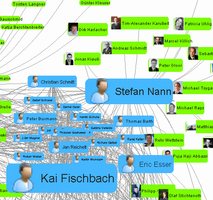 As part of the FHNW program two projects were also presented. Amazee is included in one of their partner projects, one goal being the creation of a sort of Karma Index into the Amazee system, which will include a recommendation engine so that new users are quickly connected with other users with similar interests when they join. I find this to be fantastic, because the first thing you wonder about when joining an online organization like Amazee (or Stylished, or Talenthouse, or Flickr) is how to find the people you want to work with. My mind had become a tad befuddled by this point from the free beer, but it was able to coherently listen to the presentation of the Galaxyadvisors.com website. It’s basically a connection engine, trolling through networks picking out connections between different people, creating connections between them, and then displaying this as a giant web. I’m more or less smart enough to appreciate the full value of it, as were most people in the room. I’m going to keep tabs on Galaxyadvisors, as many great things could come from it.
As part of the FHNW program two projects were also presented. Amazee is included in one of their partner projects, one goal being the creation of a sort of Karma Index into the Amazee system, which will include a recommendation engine so that new users are quickly connected with other users with similar interests when they join. I find this to be fantastic, because the first thing you wonder about when joining an online organization like Amazee (or Stylished, or Talenthouse, or Flickr) is how to find the people you want to work with. My mind had become a tad befuddled by this point from the free beer, but it was able to coherently listen to the presentation of the Galaxyadvisors.com website. It’s basically a connection engine, trolling through networks picking out connections between different people, creating connections between them, and then displaying this as a giant web. I’m more or less smart enough to appreciate the full value of it, as were most people in the room. I’m going to keep tabs on Galaxyadvisors, as many great things could come from it.
After the talks I walked around the room enjoying two quick glasses of wine talking with cool people, and then took a tour of the Google offices half buzzed on vino. The experience was…fantastic. You don’t need to be half buzzed to enjoy the Google offices, but it does enhance the experience. Just walking around you feel drunk, wondering if it’s possible, or if you’re simply hallucinating, can it be possible for offices be this “cool?” No, this is madness, surely I drank a bottle of bottle of Jack at my apartment and am simply losing all functions of my mind, and as a last gasp before dying my brain has created this fantasy land for me to enjoy before I cease to exist. But this actually happened, and I have pictures to prove it, as well as a video of my shoes sliding down a pole instead of taking the stairs.
Web Monday Zurich #10
 Web Monday Zurich is a meeting setup on Amazee.com to enable interaction between people in the web community around Zurich. Startups have a chance to present their ideas and get feedback, everyone has a chance to mingle and network, feed your brain and your innovation side in social atmosphere, how can you not go?
Web Monday Zurich is a meeting setup on Amazee.com to enable interaction between people in the web community around Zurich. Startups have a chance to present their ideas and get feedback, everyone has a chance to mingle and network, feed your brain and your innovation side in social atmosphere, how can you not go?
I wanted to attend my first Web Monday at the end of August, companies like MAGMAG Magazines were presenting, and being a photographer looking for new ways to present visual content, I was eager to see what was up. But that Monday I had just flown back from shooting a wedding in Rome, had picked up some sort of sickness, and took down the wrong address. So I ended up looking for Feldstrasse 113, a fictions address just different enough from Feldstrasse 133 to make me think I was going out of my mind.
Web Monday #10 was held in the Amazee office at the Technopark in Zurich (I was there before for a booster party), and my mind was sharp, so it was problem to find and attend. I could have stayed home and played with my new Octabox, but I was itching to infuse my mind with something new.
Two companies presented, GetYourGuide.com and StreamForge.
So, there’s like a thousand travel website on the net, you can book a flight, book a hotel, book a car, book a train…but what about booking “an experience?” GetYourGuide is a newly out of Beta website Startup which seeks to connect trip provides (suppliers) with people looking for travel experiences (customers). The idea is you head to the website and and quickly search through destinations or activities and quickly find a cool experience, like a city tour, bike tour, etc. I see a lot of potential for GetYourGuide, because I’ve been in a position to use it many times. During the Spring I was in San Diego and L.A. for a few weeks. In San Diego I was trying to book a kite boarding class, in L.A. I was searching for the best graffiti. I ended up buying some Bratz dolls and shooting them on the streets of the cities. So, in the end I didn’t learn to kite board, but did have a cool experience. However, I didn’t end up kite boarding because by the time I found a school, I had run out of time and had to fly back to Zurich. For a travel consumer such as myself, GetYourGuide can offer a lot of value, and I’ll use it to find a cool trip in the next city I visit.
For trip suppliers GetYourGuide is attractive, because it connects the local suppliers to the global customer directly. It includes a very nice back-end with analytics software to help suppliers see how people are visiting their trip listings. At the moment GetYourGuide is targeting popular destinations, and finding trip suppliers in those main cities. This is nice strategy, as they can bring in revenue quickly, and then expand to targeting trip suppliers in broader destinations. This is what interests me the most, because if you’re looking for a cattle driving experience in New Mexico and you live in Stuttgart, it’s not so easy to do. I also had problems in the past contacting mountain guides in Bolivia when I flew down there. I think if GetYourGuide expands into these areas and eventually targets specialty suppliers, they’ll set themselves apart from their competitors like Viator.com and have a web company offering a lot of value to their customers and suppliers. I’m looking forward to a travel experience-enhanced future.
So, when Barack Obama was giving his inauguration speech, so many people tuned in that the video feed was unavailable, the internet was broken – overloaded, users were blocked, their experience ruined. I didn’t watch the speech, but I do recall trying to watch the 2009 Leica webcast during the launch of their new cameras, the S2, X1, and M9. Their servers were overloaded and I had to read about it on a forum, how disappointed I was. How can we avoid this in the future? By using Peer-to-Peer strategies like those employed in LimeWire and previously in Napster (and now many others).
Instead of downloading the video or audio content directly from a website, parts are downloaded from other people who are downloading the same content. This removes the load from the main server, and enables people to maintain their enjoyment of the internet without overloading the system. This isn’t a new idea (in principle) it was tried (and failed) in the past. But StreamForge is using technology developed from the latest research at ETH Zurich, and like many technologies, the subsequent try is often far better than the first attempt.
Like (as far as I know) all Peer-to-Peer sharing platforms, StreamForge does require that their software be downloaded and installed by users, otherwise they wouldn’t be able to upload data and remove the load on the main server. But this presents a potential problem, because many consumers are wary of installing random programs which are connected to the internet, even though it may not be any different than using a webpage. Also, this is a technology which the main server companies need to adopt and trust in. If these two barriers can be overcome, then StreamForge has a bright future. There are other examples of companies with similar problems. Flash was introduced something like many, many years ago, but it’s really only in the last few years that it’s gained wide acceptance, and nearly every web browser has it installed.
Brass Tacs
Web Monday #10 rocked, I love seeing how different technologies develop and how new companies launch and present themselves. It’s very inspiring, and makes you think in new ways (at least, it works for me). I had an excellent time at Web Monday #10, I’m sad I missed #9, and am looking forward to #11, which will include presentations by Prof. Manfred Vogel from FHNW, Joaquin Cuenca Abela from Panoramio and Andreas Hoffmann from UBS (there’s a contest in the works).
The next Web Monday is coming up on Nov. 30th, location to be announced. Check out the Web Monday Zurich magazine on Amazee for further details. Also, STARTWERK.CH was a German write-up on Web Monday #10.

